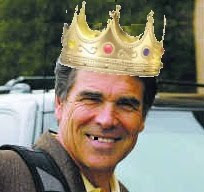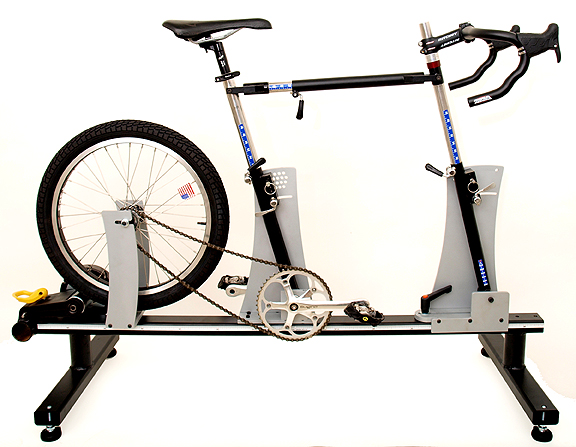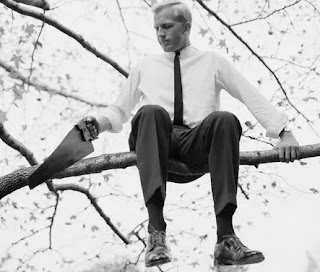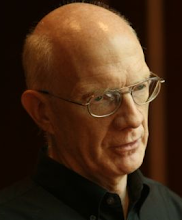 Rick Perry, the governor of the State of Texas, is a lying tyrant and should be impeached.There might be people who think that statement is just a wee bit strong. But you know, I just don't know how to put it more plainly and simply than that. I'm sure that most readers of this blog know the basics of the story by now, but just in case, let's review them:
Rick Perry, the governor of the State of Texas, is a lying tyrant and should be impeached.There might be people who think that statement is just a wee bit strong. But you know, I just don't know how to put it more plainly and simply than that. I'm sure that most readers of this blog know the basics of the story by now, but just in case, let's review them:
The Legislature of the State of Texas soundly passed a bill, SB 488, "Relating to the operation of a motor vehicle in the vicinity of a vulnerable road user; providing penalties," intending to protect (among others) bicyclists in the state of Texas. It was passed out of committee by a vote of 7-2. The bill was passed by a vote of 142-0 (with 2 abstentions) in the Texas House of Representatives last June 2, and on June 3 by 26-5 in the Texas Senate (so I trust there will be no challenge to the word "soundly".) The bill was certified by the conference committee to have no negative fiscal impact on either the State of Texas nor the communities of Texas.A web page for the bill, from which the text can be downloaded, is here.The bill would have required motorists to give cyclists and others categorized as "vulnerable road users" at least 3 feet of clearance when passing on most highways. The "vulnerable road users" category would have included pedestrians, highway construction and maintenance workers, tow truck operators, stranded motorists or passengers, people on horseback, bicyclists, motorcyclists, moped riders, and other similar road users.Texas Governor Rick Perry, in an action surprising to some observers, vetoed the bill last June 19th. (The Texas state Constitution gives the Governor ten days after receiving a bill to either sign it or veto it, I don't understand why this bill could have been vetoed after 16 days. But that's for more expert Texas legal minds to ponder.)Perry, a mountain-biker who recently broke his collarbone in an accident, said that many road users in this category already have operation regulations and restrictions in state law. He stated,
“While I am in favor of measures that make our roads safer for everyone, this bill contradicts much of the current statute and places the liability and responsibility on the operator of a motor vehicle when encountering one of these vulnerable road users.”
Perry is plainly lying when he says that he is "in favor of measures that make [Texas'] roads safer for everyone." This statement can be explained no other way. (It's not merely a lie, it's a bald-faced lie, one that is so obvious and blatant that it dares to you call it such, and I choose to do so.) So now let's address the "Tyrant" part of my earlier epithet.
Perry as governor of Texas doesn't have a lot of power, really. The real power is in the Legislature (the "Lege" as it was referred to by the late great muckraker and humorist Molly Ivins.) The only real power the Governor has is the veto. Perry has misused this power: In the four legislative sessions completed while he was governor, Perry has vetoed 203 bills – more than any other governor of Texas. He is also the longest-serving governor in Texas history. (What are you Texans out there thinking, anyway? If you elected a fire-hydrant to the office of Governor, at least it would do less harm than Perry!) This petulant and corrupt over-use of the veto authority is taking power out of the hands of the legislature and the people they represent, hence my use of the "Tyrant" epithet.
The state of Texas has a provision for the legislature overriding governor vetoes, but according to this article, there are procedural issues that make overrides difficult. So the Texas Legislature has written a bill providing for a Constitutional amendment to allow the Legislature to call a special session to deal specifically with veto overrides. However, according to Texas Senator Jeff Wentworth (R), Perry and Lieutenant Governor David Dewhurst are conspiring to prevent the constitutional amendment from making the floor of the Senate.
All of this would be moot if the state of Texas enforced the laws on its books (you know, those laws that Perry says suffice.) But they don't. If you're a cyclist in Texas, you have very little protection. Consider the tragic case of Gregory and Alexandra Bruehler. The San Antonio couple were riding a tandem on the shoulder of Highway 16 north of Helotes, TX when a truck struck them from behind. They were both killed and leave behind a 7-year-old daughter. (Heart-rending images of the daughter abound in the blogosphere, and I won't reproduce them here.) Local news reports that “investigators say there are no charges on the driver. They believe this was an 'accident' and that somehow the driver lost control of his truck.” Even though the driver was reportedly exceeding the speed limit. That, dear friends, is the  state of law enforcement in Texas (and, to be fair, in other states.)
state of law enforcement in Texas (and, to be fair, in other states.)
You might think that, given this (admitted) diatribe, I don't care for Texas. But that's not true. I lived for almost 30 years in Texas, and I love that state, and I love Austin, where I married and had kids. I love Texas, but I've had enough of lame-brained Texas politics. Just like another stupid mountain-biking governor of Texas, this one should be impeached.
Memo to Texas Legislature: Grow a pair.
Memo to State's Attorneys across the State of Texas: start doing the job you were elected to and enforce the laws that are on the books.
 The new tagline above is from Iris Murdoch. I saw over at Urban Simplicity an article about her that incorporated the quote. I'd been using the H.G. Wells "no longer despair" quote for a while, but things needed a change. Thanks to BuffaloCook over at Urban Simplicity for acquainting me with Iris Murdoch! Here's her Wikipedia page.
The new tagline above is from Iris Murdoch. I saw over at Urban Simplicity an article about her that incorporated the quote. I'd been using the H.G. Wells "no longer despair" quote for a while, but things needed a change. Thanks to BuffaloCook over at Urban Simplicity for acquainting me with Iris Murdoch! Here's her Wikipedia page.












